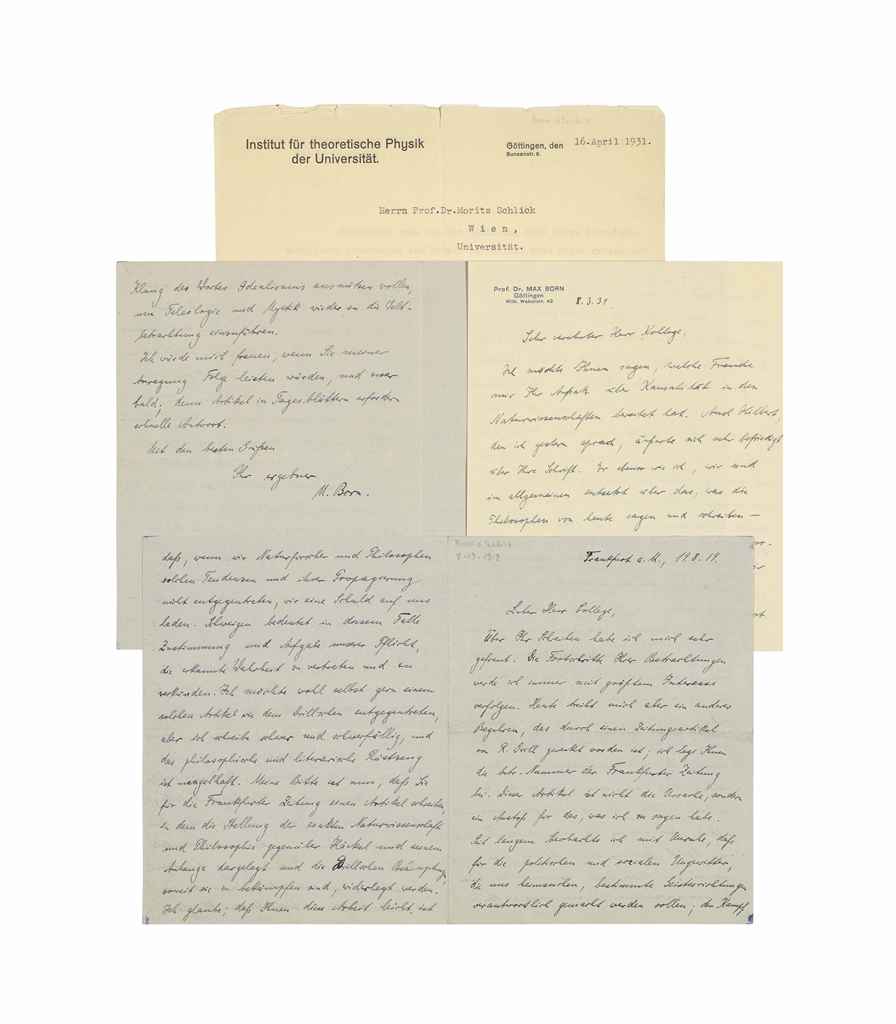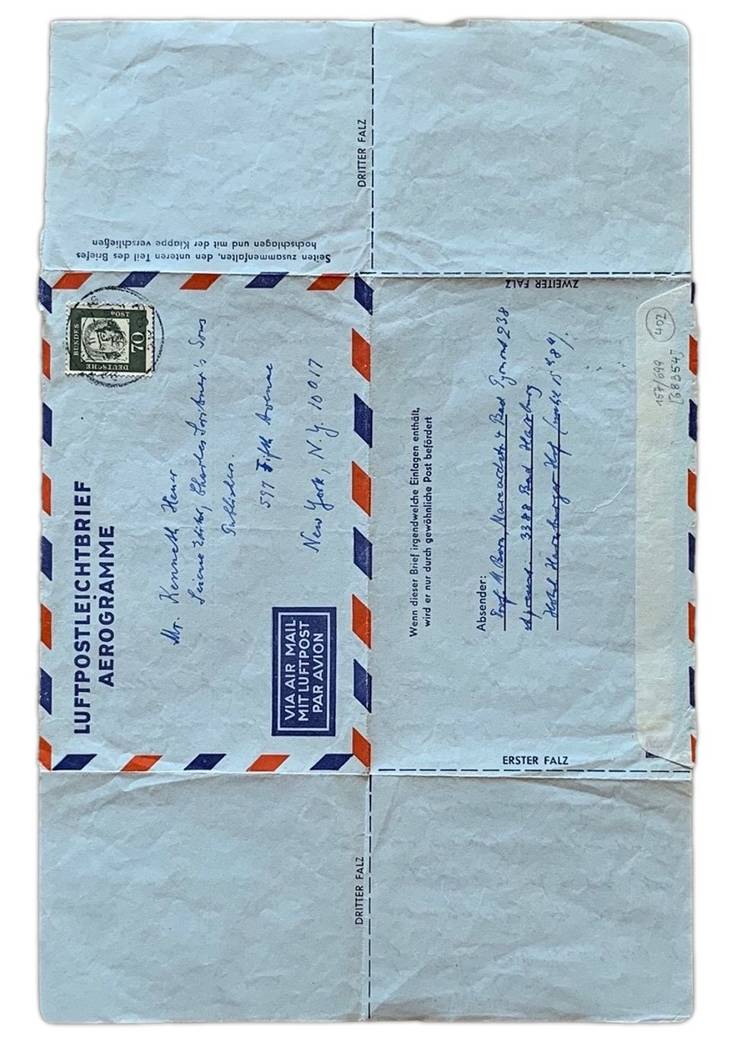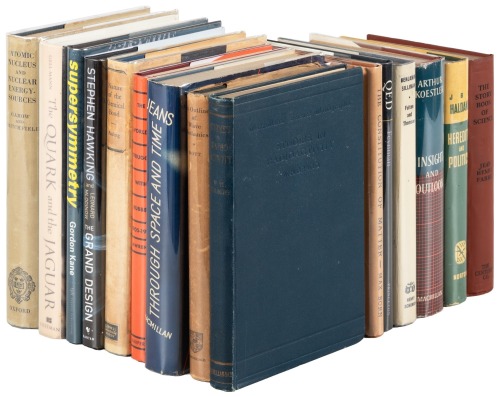BORN, Max and P. JORDAN. Zur Quantenmechanik. Offprint from: Zeitschrift für Physik, 34. Berlin, 1925. Original printed wrappers. FIRST EDITION, offprint issue. [ With: ] BORN, Max, W. HEISENBERG and P. JORDAN. Zur Quantenmechanik II. Offprint from: Zeitschrift für Physik, 35. Berlin, 1926. Original printed wrappers. FIRST EDITION, offprint issue. The second paper in this lot is the first, complete, self-consistent description of quantum mechanics-the famous "Three-Man" paper. "In May, 1925, Heisenberg deliberately abandoned the classical picture of particles and orbits, and took a long, hard look at the mathematics that describes the associations between pairs of quantum states, without asking himself how the quantum entity gets from state A to state B. "In the summer of 1925, working with Pasqual Jordan, Born translated Heisenberg's mathematical insight into the formal language of matrices, and Born, Heisenberg and Jordan together published a full account of the work, in what became known as the "three-man paper." The equations of Newtonian (classical) mechanics were replaced by similar equations involving matrices, and many of the fundamental concepts of classical mechanics-such as the conservation of energy-emerged naturally from the new equations. Matrix mechanics seemed to contain Newtonian Mechanics within itself, in much the same way that the equations of the general theory of relativity include the Newtonian description of gravity as a special case." [Gribben, pp. 325-326]. Twentieth Century Physics I, 188. (2)
BORN, Max and P. JORDAN. Zur Quantenmechanik. Offprint from: Zeitschrift für Physik, 34. Berlin, 1925. Original printed wrappers. FIRST EDITION, offprint issue. [ With: ] BORN, Max, W. HEISENBERG and P. JORDAN. Zur Quantenmechanik II. Offprint from: Zeitschrift für Physik, 35. Berlin, 1926. Original printed wrappers. FIRST EDITION, offprint issue. The second paper in this lot is the first, complete, self-consistent description of quantum mechanics-the famous "Three-Man" paper. "In May, 1925, Heisenberg deliberately abandoned the classical picture of particles and orbits, and took a long, hard look at the mathematics that describes the associations between pairs of quantum states, without asking himself how the quantum entity gets from state A to state B. "In the summer of 1925, working with Pasqual Jordan, Born translated Heisenberg's mathematical insight into the formal language of matrices, and Born, Heisenberg and Jordan together published a full account of the work, in what became known as the "three-man paper." The equations of Newtonian (classical) mechanics were replaced by similar equations involving matrices, and many of the fundamental concepts of classical mechanics-such as the conservation of energy-emerged naturally from the new equations. Matrix mechanics seemed to contain Newtonian Mechanics within itself, in much the same way that the equations of the general theory of relativity include the Newtonian description of gravity as a special case." [Gribben, pp. 325-326]. Twentieth Century Physics I, 188. (2)















Testen Sie LotSearch und seine Premium-Features 7 Tage - ohne Kosten!
Lassen Sie sich automatisch über neue Objekte in kommenden Auktionen benachrichtigen.
Suchauftrag anlegen